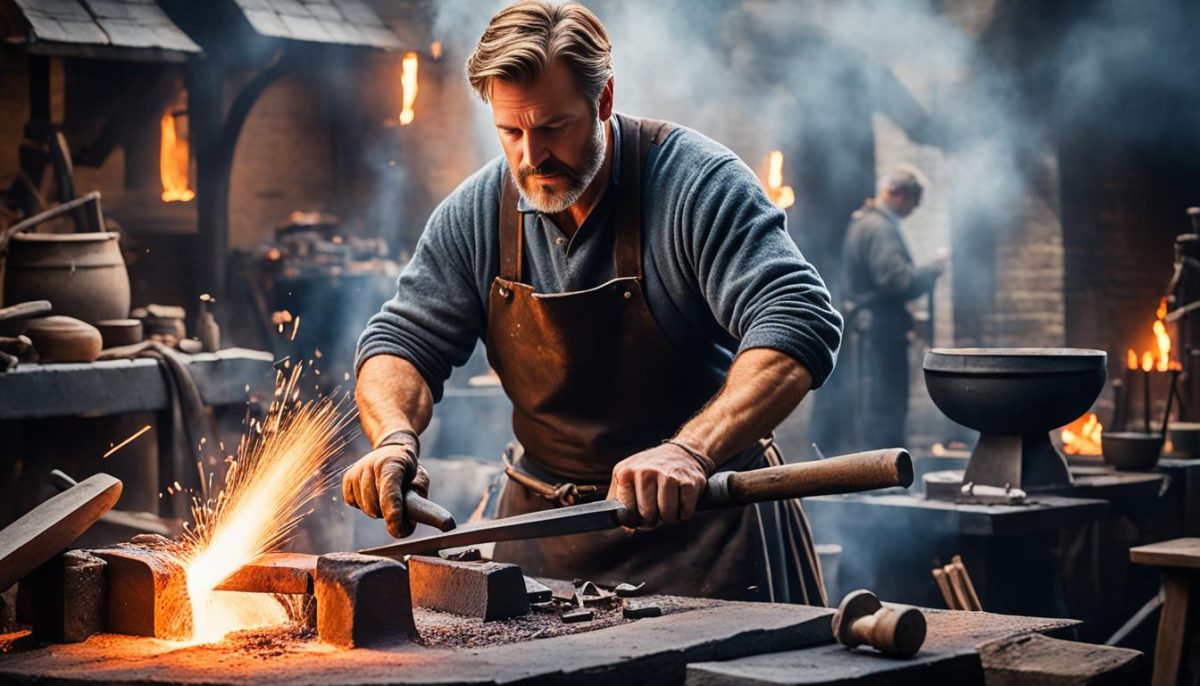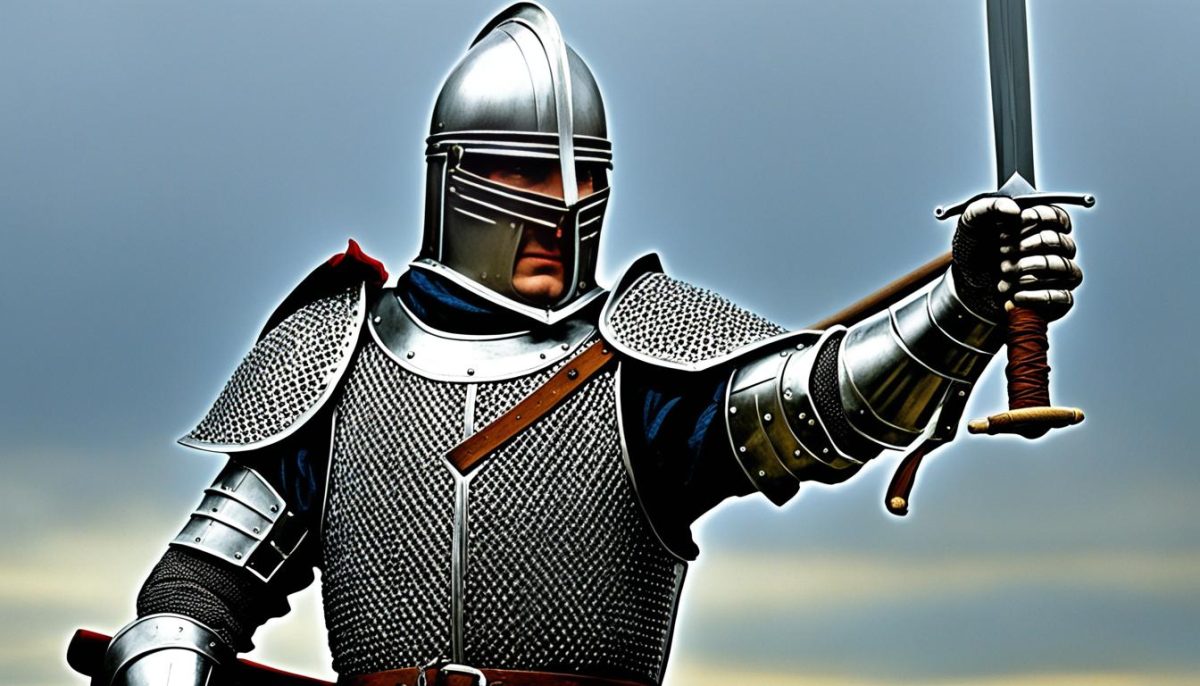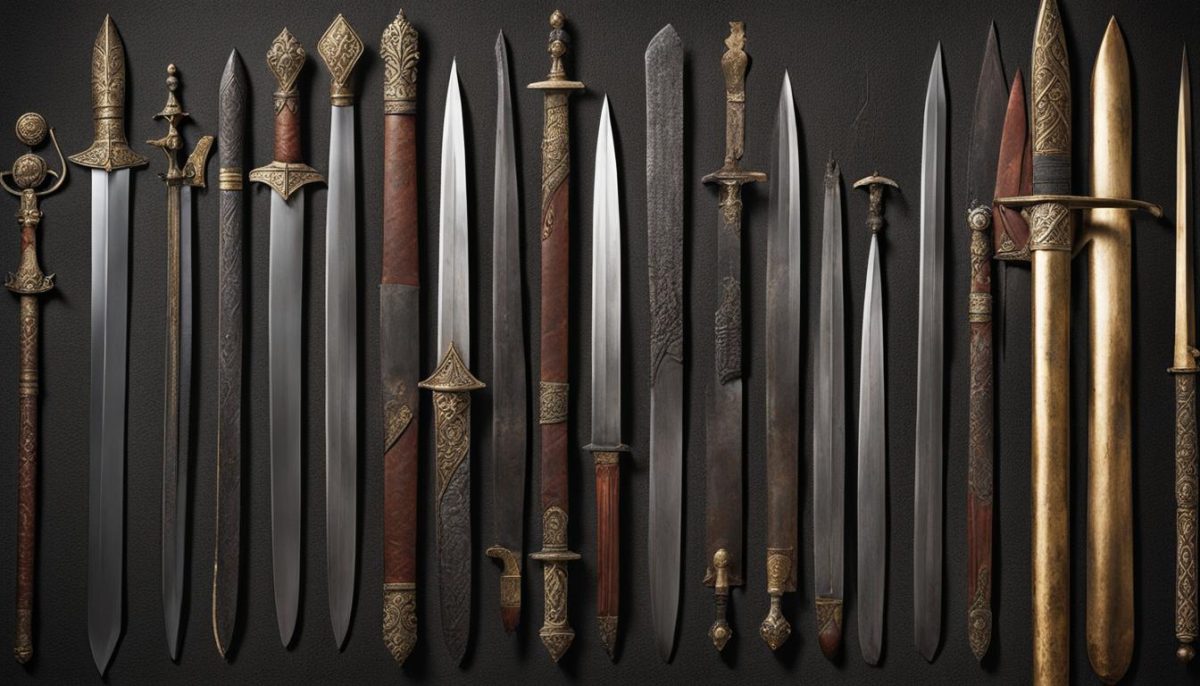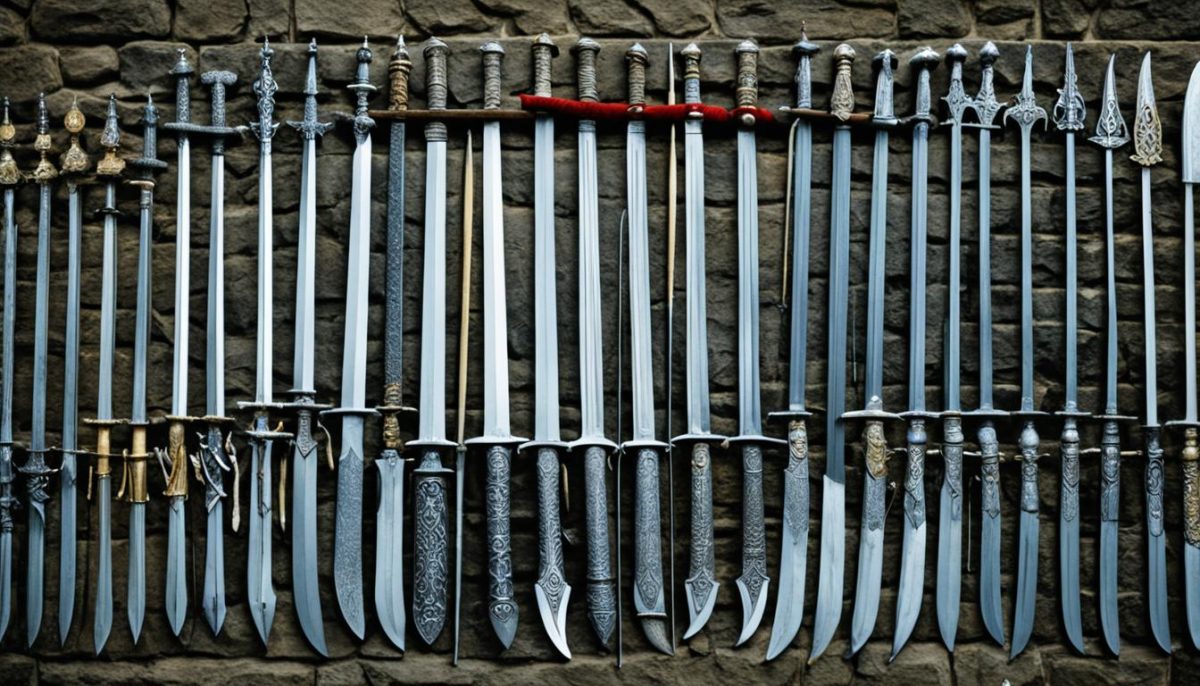The lore of medieval weaponry often portrays swords as colossal implements of war, soaring through battlefields with the might of giants. But was this the reality? The sword weight of these historical artifacts tells a more nuanced tale, tracing the evolution of military needs and technological advancements in European swords. As we delve into the history of historical swords, a pattern of practicality emerges, showing us that the functional design of these weapons was far more significant than their heft.
The Historical Context of Medieval Swordsmithing
Unlocking the intricacies of medieval swordsmithing provides us with a window into the past where the art of war and craftmanship intersect. From the raw clang of iron against anvil to the emergence of refined steel blades, medieval Europe experienced significant advancements in the techniques and materials used for forging swords. This period was marked by an enduring quest to enhance the effectiveness of one of the most symbolic and vital tools of the time—the sword. As we delve deeper, the evolution of sword design and blacksmithing techniques during this era reveals a rich tapestry of innovation and skill.
The Evolution of Sword Design in the Middle Ages
Diligent examination of the historical timeline shows a discernible trajectory in the evolution of swordsmithing. Early Viking swords, notable for their pattern-welded designs, laid the groundwork upon which later medieval advancements were built. The transition to the High Middle Ages saw the introduction of swords with improved metallurgical composition and cross-sectional designs, catered to excel both in cutting and thrusting. Swords like the arming sword and the longsword are prime examples of this evolution, displaying the harmonious balance between function and form—a balance meticulously forged in fire and steel.

Materials and Techniques Used in Sword Forging
Material choice and forging techniques are central threads in the fabric of sword evolution. The transformation from wrought iron to crucible steel signified a significant leap in blade quality. Blacksmiths in the medieval era honed their craft, employing methods such as quenching and tempering to yield blades of remarkable resilience and strength. This tempering process involved carefully controlled heating and cooling cycles, which induced desirable properties like toughness and edge retention into the metal. These innovations in blade materials and blacksmithing techniques heralded the era of superior weaponry, which forever changed the landscape of medieval combat and craftsmanship.
- Advances in iron and steel metallurgy greatly impacted sword quality.
- Quenching methodologies improved to enhance blade strength.
- The tempering process became refined to ensure blades were both strong and flexible, resisting breakage upon impact.
- Emerging geometric designs and fuller grooves in blades reduced weight while maintaining structural integrity.
Through a thorough understanding of these developments, we live vicariously through the pages of history, witnessing swordsmiths elevate their art from mere weaponry fabrication to an often-celebrated form of high craftsmanship—a legacy of sword evolution that still fascinates enthusiasts and scholars today.
Heavy Medieval Swords: Debunking Myths and Misconceptions
The enduring image of knights wielding colossal swords that seem to require herculean strength to lift, much less wield in battle, is one firmly implanted in the annals of pop culture. Cinematic epics and high fantasy novels have painted medieval swords as unwieldy behemoths, prompting many to wonder about the historical accuracy of such representations. As we delve into the formidable world of medieval weaponry, it’s vital to separate fact from fiction by employing artifact analysis and reviewing scholarly research to truly understand the characteristics and practicalities of these instruments of medieval combat.
Examining Popular Representations of Sword Weight
Hollywood blockbusters and literature alike have often depicted medieval swords as symbols of brute force, focusing on sheer size to convey power. Yet, this portrayal overlooks the artistry and finesse with which these swords were designed and used. Sword myths propagated by such representations neglect the crucial balance and weight considerations that swordsmiths of the era meticulously employed. The reality is far from these modern exaggerations, as historical artifacts demonstrate that functionality and manageability were key—aspects that were essential for a knight or soldier whose life depended on their blade’s performance in the heat of battle.
How Historical Artifacts Challenge Modern Perceptions
When historical accuracy takes the forefront, a fascinating narrative unfolds, one where medieval swords are both practical and diverse in design. Artifact analysis of surviving swords — many displayed in museums or held in private collections — reveals an astonishing range in size and weight, directly contesting the fallacies often seen on screen. In fact, the spectrum of weights accommodated various combat situations, with lighter swords for quick maneuverability and heavier versions for more impactful blows. Such evidence-based conclusions not only enrich our understanding of medieval combat but also pay homage to the skilled craftsmanship of the time. By shattering these sword myths, we can appreciate the true legacy of medieval swords as sophisticated tools of war, emblematic of an era that was far more complex than mere brute force and legendary heft.



